In our previous blog, we showed the benefits of replacing the OE insulation typically found under carpet or vinyl flooring with our Stealth™ Shield. Stealth Shield works great, and to achieve the best results in keeping as much heat as possible from being radiated into the vehicle’s interior from underneath, you can use two additional thermal barriers from the Heatshield Products lineup.
Sticky™ Shield stick-on thermal barrier used in conjunction with Heatshield Armor™ exhaust insulation will significantly reduce the amount of heat being radiated from the drivetrain, exhaust and road. Most late-model vehicles are equipped with basic heatshields to block radiated heat in certain areas, but on pre-catalytic converter models there is little to no heat-shielding. And on late-model rides, the factory heat shields are not the most effective and therefore could benefit from additional protection.
Using the same 1996 Chevrolet Caprice station wagon as in the previous blog, we climbed underneath to demonstrate the types of improvements Heatshield Products can make when it comes to blocking heat.
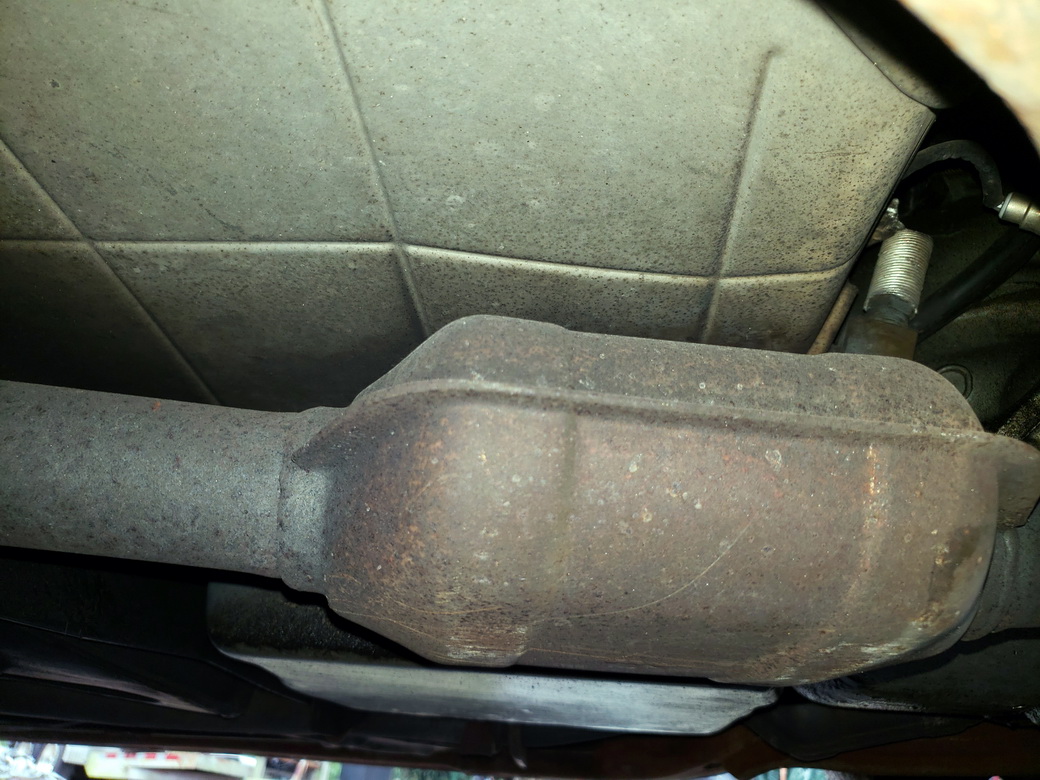
ABOVE: This is how it looks on the underside of our 1996 Chevrolet Caprice station wagon. It’s pretty much the same for any 1977-1996 GM B-body. Between the catalytic converter and exhaust pipe is a simple factory heat shield with the bare minimum of air space between it and the floor. This doesn’t create a very effective thermal barrier, requiring heavy insulation under the carpet to keep the occupants from getting hot feet.
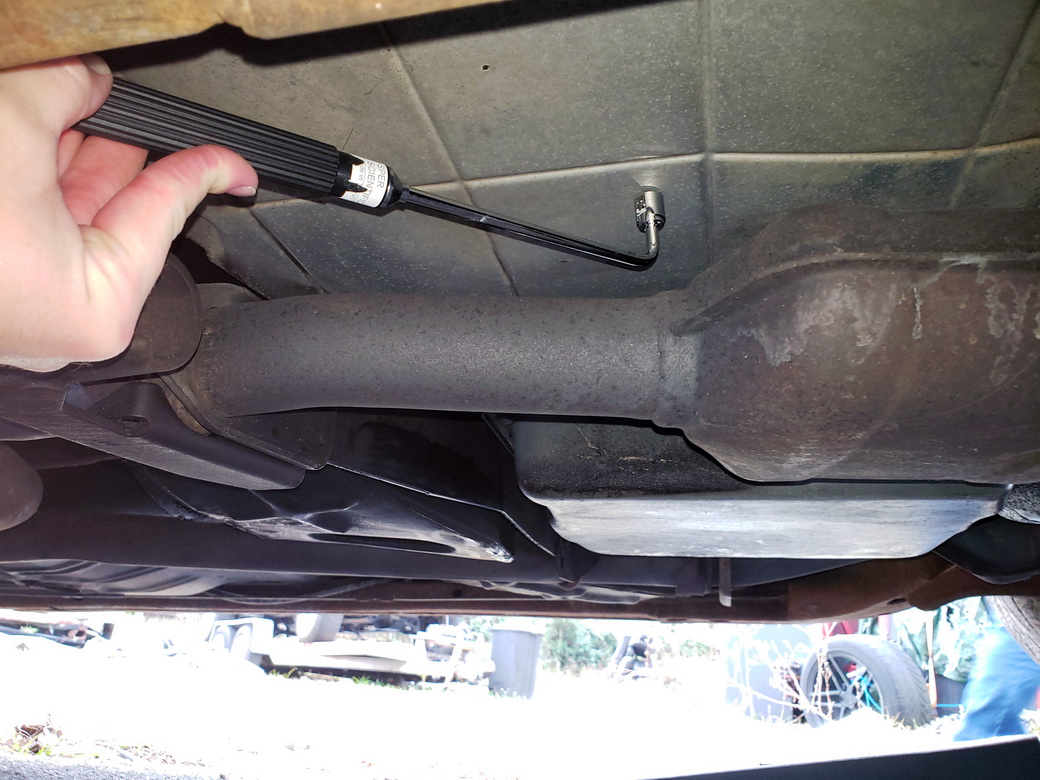
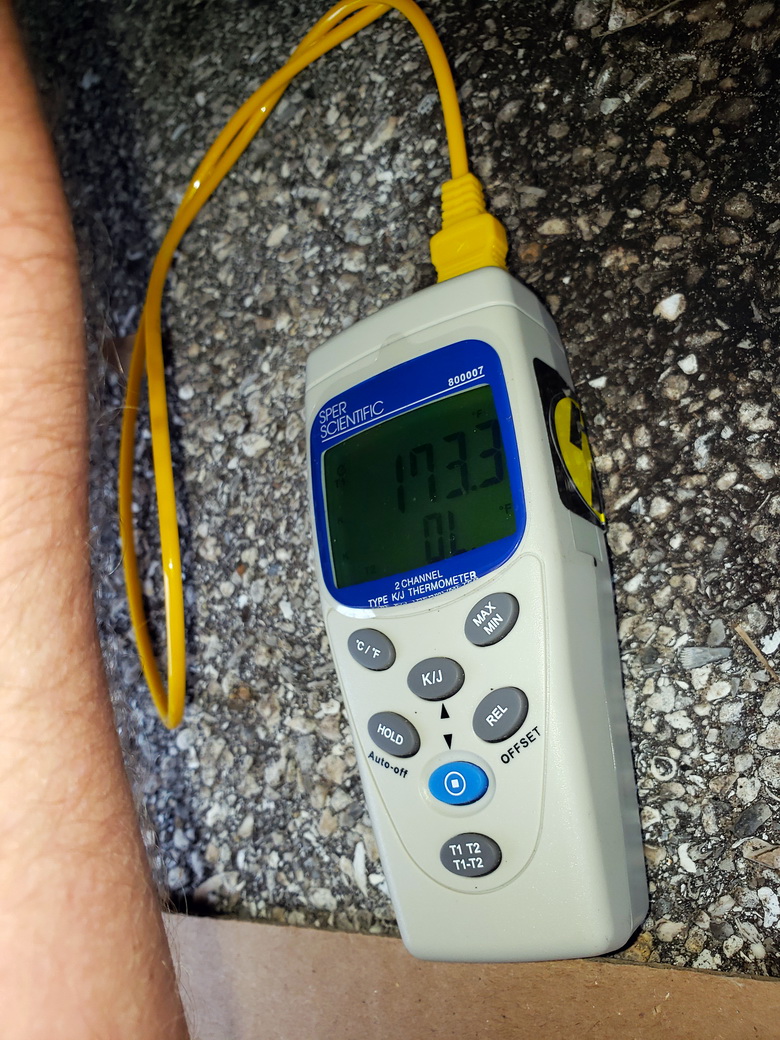
ABOVE: To measure how hot things were getting underneath the wagon, we used a contact probe to check the exhaust pipe just aft of the catalytic converter. We got a peak temperature reading of 547 degrees F off the pipe. Most of that was radiating toward the floor. A measurement was also taken directly on the catalytic converter: 401 degrees F. ABOVE (both photos): The floor heat shield measured 173 degrees F. That’s quite a bit of heat to have less than an inch away from the floor.
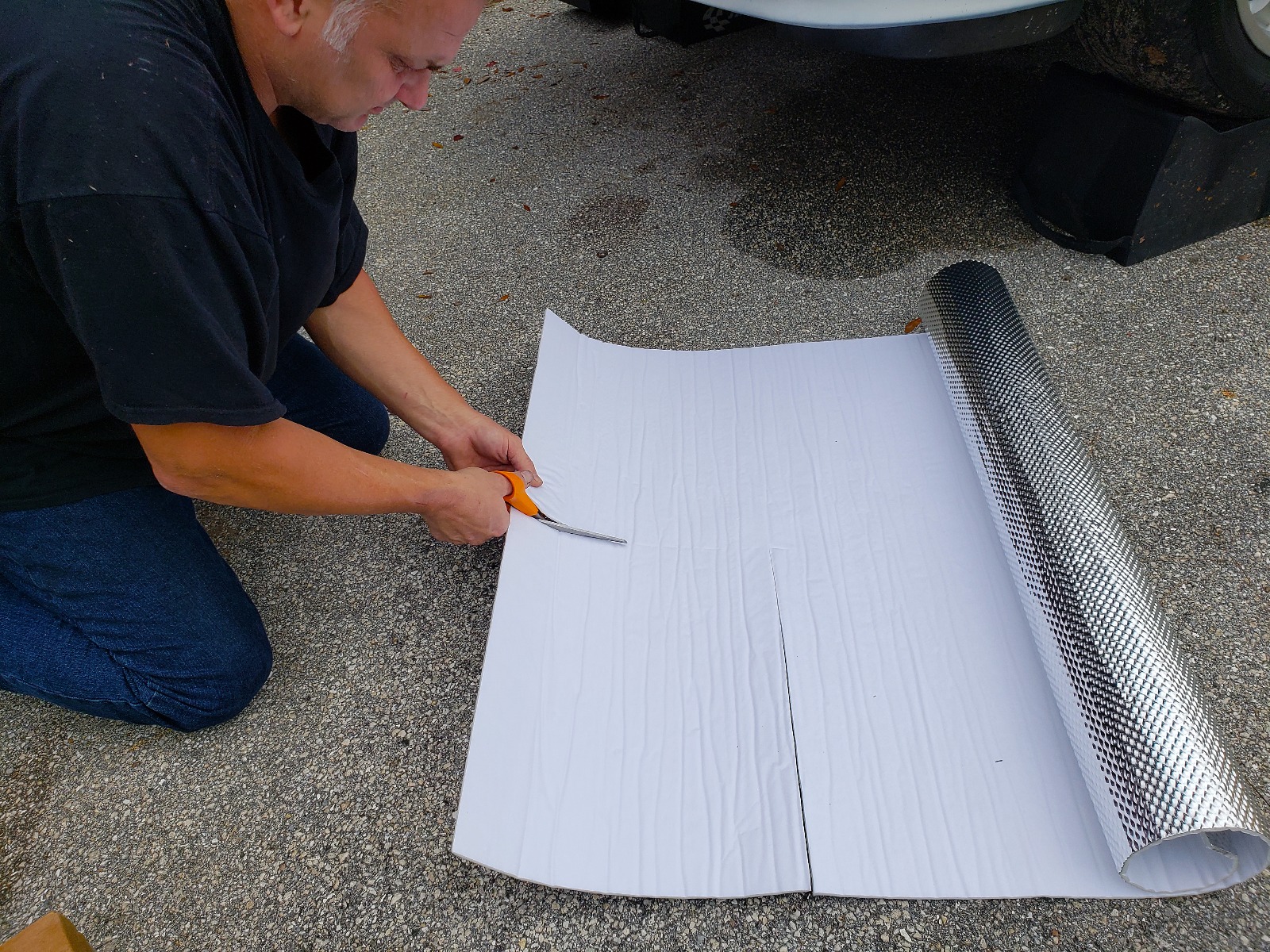
ABOVE: Our first step was to apply Sticky™ Shield material to the side of the factory heat shield underneath the car facing the exhaust, to make it more efficient at deflecting heat and preventing it from becoming heat soaked. All you need in order to cut Sticky Shield to fit is a pair of good scissors.
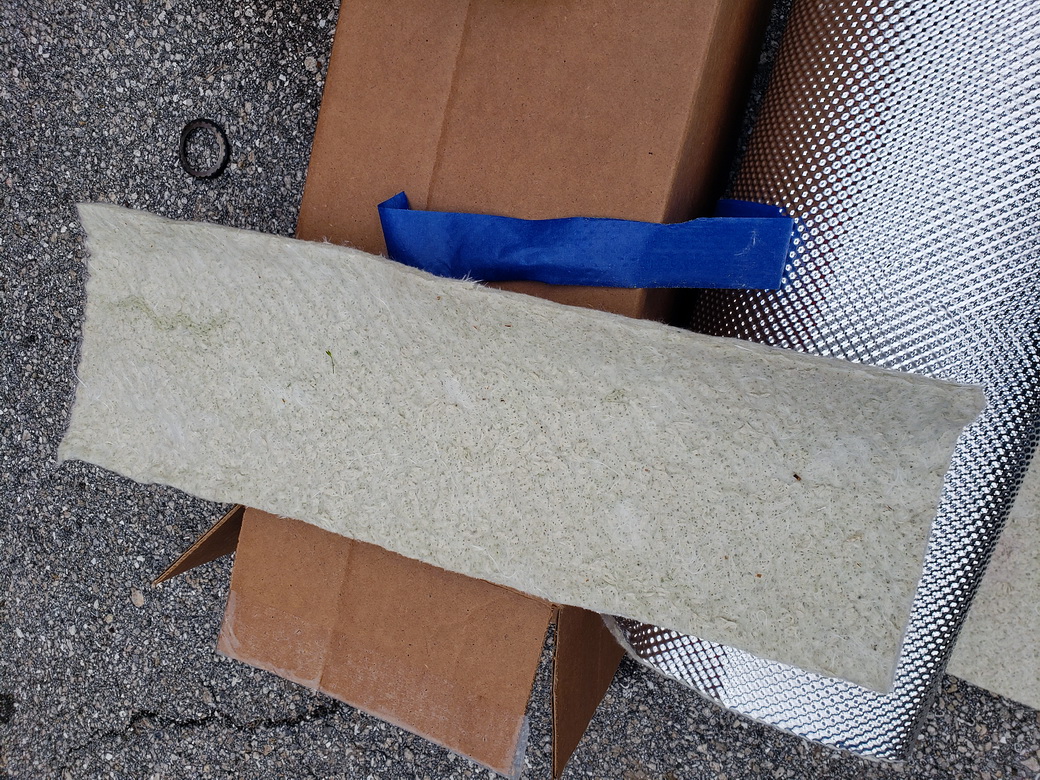
ABOVE: We used Heatshield Armor™ exhaust insulation on the exhaust pipe and catalytic converter. Heatshield Armor reduces radiant heat by up to 70 percent from exhaust pipes. Its specially formulated BioCool™ insultation keeps more heat in the exhaust system, increasing exhaust gas temperatures (EGT), which helps with exhaust system performance and scavenging exhaust gasses from the cylinders. When installing Heatshield Armor, you don’t want to completely wrap the pipe. Instead, wrap the pipe leaving a 1-3 inch gap on the side opposite the floor so the pipe can breathe.
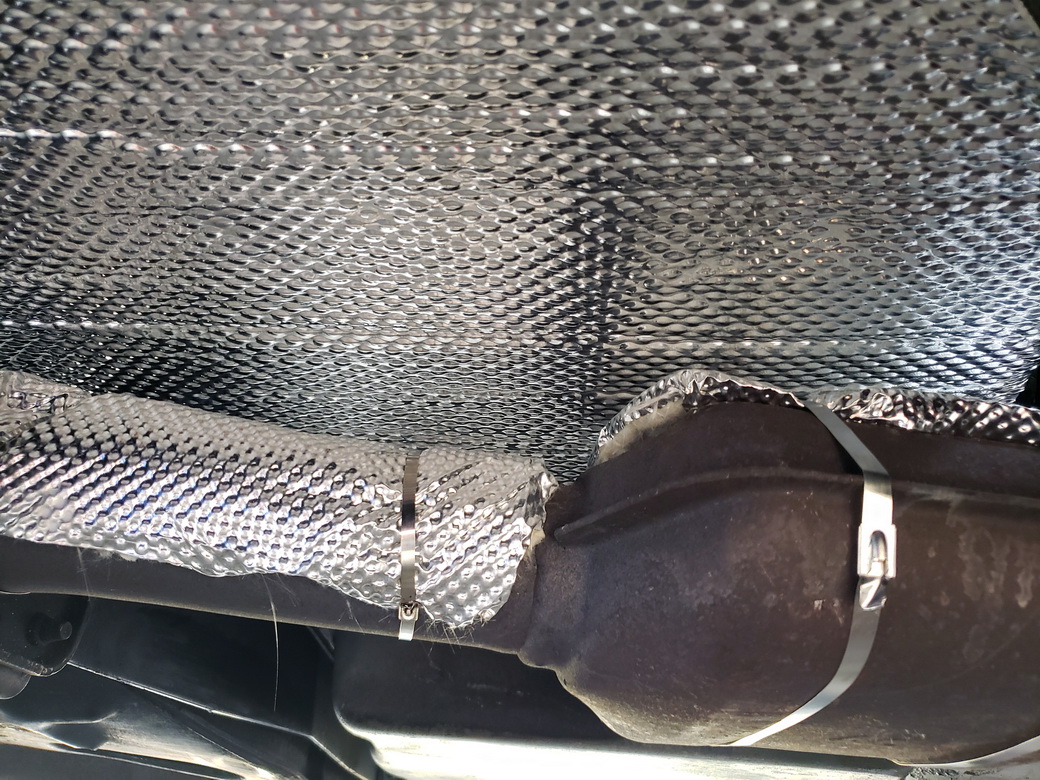
ABOVE: With the Sticky Shield in place above and the Heatshield Armor in place below, we were able to cut the amount of heat radiated through the floor by 70-80 percent. You can also see where we left part of the exhaust pipe open so that it could breathe and would not degrade the pipe.

ABOVE: Installing Heatshield Armor on the catalytic converter is different from installing it on the exhaust pipe. Holding too much heat in the converter can cause the internals to melt and create a major exhaust blockage that could harm the engine, along with ruining the catalytic converter. But just a piece of Heatshield Armor atop the converter will significantly cut the heat radiated toward the floor.
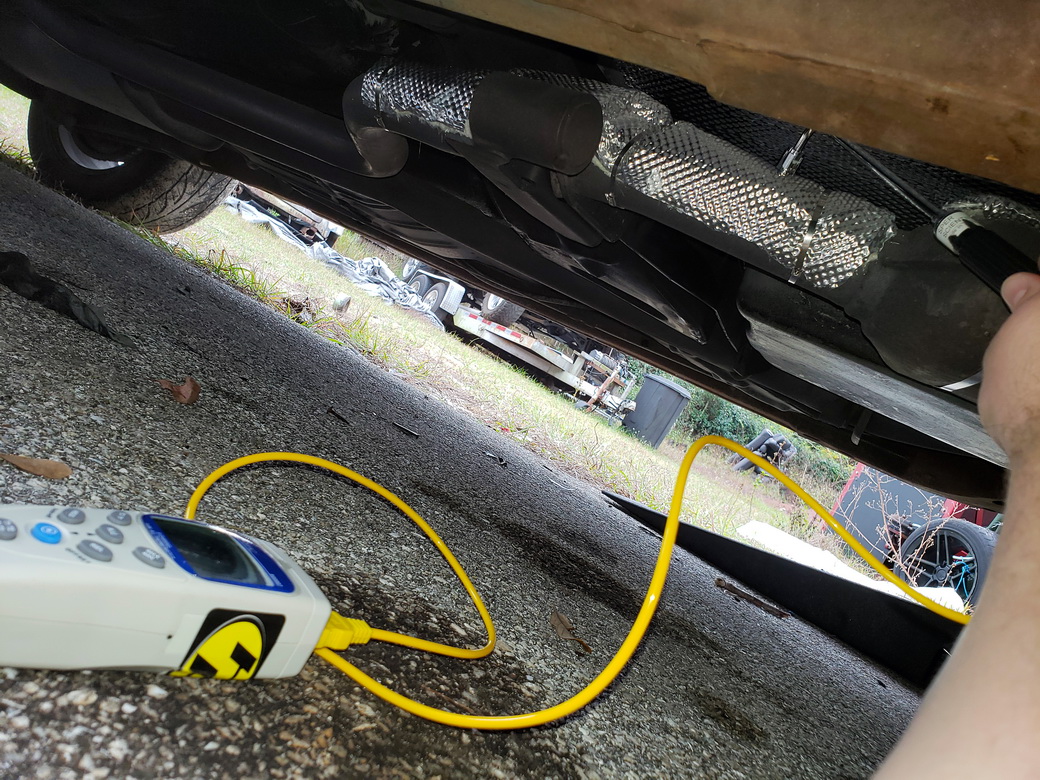
ABOVE: With everything installed, we fired the car back up, ran it to operating temperature and took new measurements. The exhaust pipe aft of the converter had previously read 547 degrees F before. Now it was 136 degrees F, cutting 411 degrees of heat from radiating from the exhaust pipe. The top of the catalytic converter read 185 degrees F, down from 401 degrees.
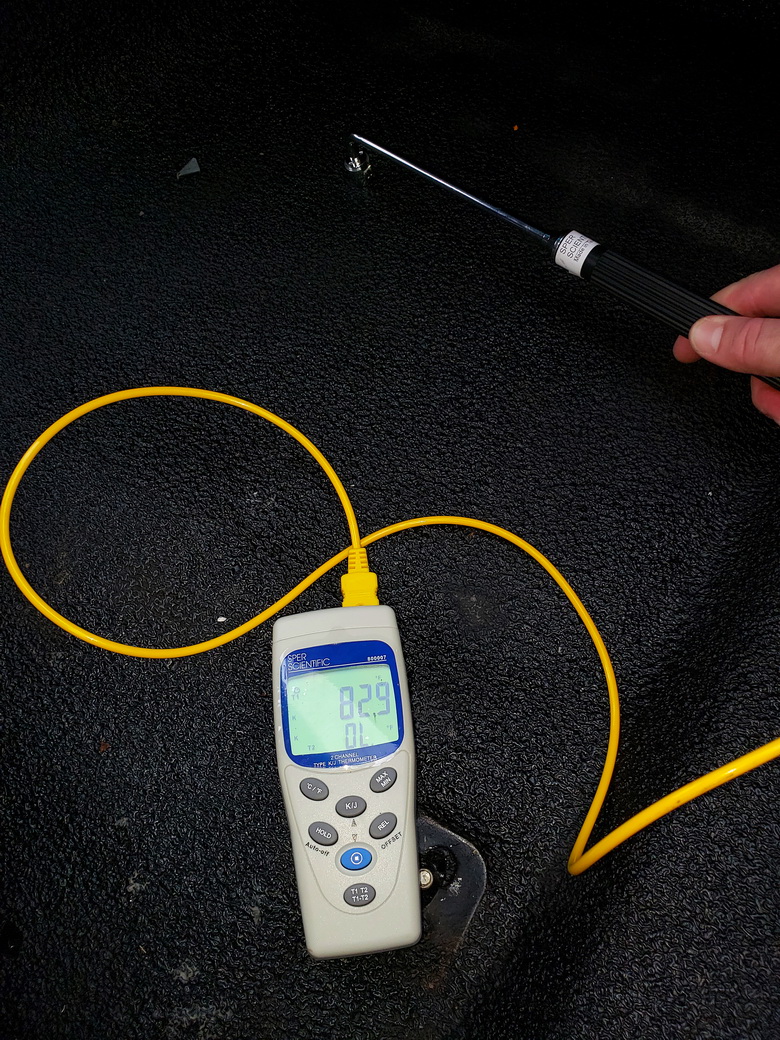
ABOVE: The interior floor was 90.3 degrees F with just the Stealth Shield insulation. Now, it read 82.9 degrees F, a 7.4-degree drop, which makes for a much cooler floor and interior.

